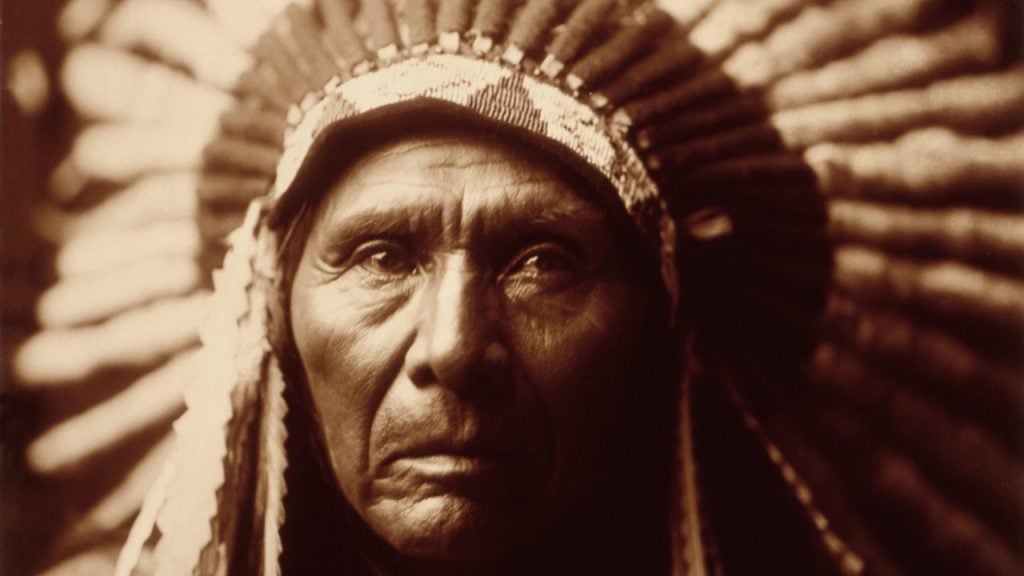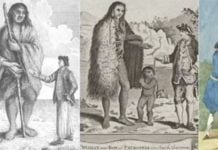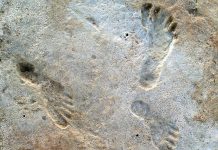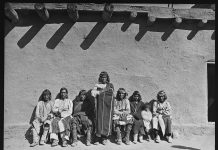In the thousands of years following their arrival to the New World, Native American populations spread out to form vastly different groups living all across the continents, with millions of people scattered from Canada to Argentina. But in the beginning, there were just 250.

A new study analyzing DNA sequences from people around the world along the path of migration indicates the founding population of the Americas included just a few hundred people.
Over time, these groups of hunters and gatherers grew and continued to split off into other ‘counties,’ eventually bringing the people all the way down to the tip of South America.
‘Going from a few hundred founders to around 40 million inhabitants of the Americas, who eventually live under different environmental conditions to which they adapt, is pretty exciting stuff,’ said Michael Crawford, a professor of anthropology at the University of Kansas. ‘It’s about understanding how evolution operates in terms of genetic diversity.’
In the study, published to the journal Genetics and Molecular Biology, researchers used DNA samples collected from areas along the path of migration.
The team examined nine noncoding regions of the DNA, with samples from individuals from China, 10 Siberian groups, and 10 Native American groups to encompass more than 15,000 years.
‘It is difficult to go back in time to follow the populations, but we can characterize contemporary genetic diversity and estimate the mutation rates that have occurred in different regions,’ Crawford said.
With these samples, the team then created isolation-with-migration computer simulation models based on 100 million generations. And, multiple analyses determined there were between 229 and 300 people in the founding population. The group further constrained this to about 250 people.
WHEN DID HUMANS ARRIVE IN NORTH AMERICA?
It is widely accepted that the earliest settlers crossed from what is now Russia into Alaska via an ancient land bridge spanning the Bering Strait which was submerged at the end of the last Ice Age.
Issues such as whether there was one founding group or several, when they arrived, and what happened next have been the subject of extensive debate.
The earliest evidence of human settlers on the continent dates to around 14,000 years ago, with the remains of an ancient village ‘older than Egyptian pyramids’ found in April 2017.

Artefacts uncovered at the settlement, found on Triquet Island 310 miles (500km) northwest of Victoria, Canada, include tools for creating fires and fishing hooks and spears dating from the Ice Age.
Other research has suggested that humans reached North America between 24,000 and 40,000 years ago. A 24,000-year-old horse jaw bone found in January 2017 in a cave in Alaska had the marks of stone tools, suggesting it was hunted by humans.
According to current research, the ancestors of all present-day Native Americans came to the Americas from Siberia up to 23,000 years ago. They eventually split into the Athabascans and Amerindians, after an isolation period in Beringia that lasted, at most, 8,000 years.
The new estimates now help to put a number on the so-called genetic bottleneck that led to the populating of the Americas. ‘It wasn’t a matter of group that announced, “Let’s go follow this one,”’ Crawford said. ‘It was a matter of population fission among hunters and gatherers. There would be about 50 people, and when the population’s fertility gets higher and higher, the population splits into the next so-called “county” and then the next. After 15,000 years, you can put them all the way down in Argentina.
Can you imagine that?!? From 250 people to tens of millions! WOW!











